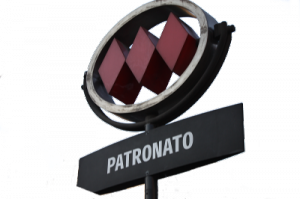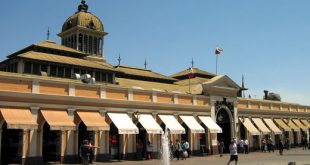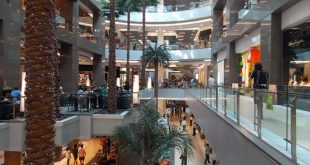Any city the size of Santiago is obviously going to be incredibly diverse. No matter where you are in the city, you can find people, products, and cuisine from a variety of places. But there is one particular spot in Santiago where this cultural mash-up is particularly evident: Barrio Patronato. This shopping and dining district, which is bordered by Bellavista, Buenos Aires, Rio de Janeiro, and Recoleta streets, provides a wide array of budget-friendly options as well as a hearty helping of uniquely Chilean culture. Tourists and locals alike could lose hours browsing through the stalls, shops, and restaurants, all of which make this historic zone a must-visit spot during your trip to Santiago.
Perhaps the most striking thing about Barrio Patronato is the fact that it is more appealing to the ladies: it’s got clothes, clothes, and more clothes. Take the yellow metro line to the Patronato stop; when you get off, walk down any of the streets in this area and you’ll be winding your way through seemingly endless stalls of fashionable items, most of them for women (although clothing for men and children is also available). All of these clothes are imported, primarily from China. The people hawking them are both Chilenos and foreigners, which gives the market an other-worldly feel. Some of the salespeople can be quite pushy, but in general they are accustomed to people passing them by, so they won’t be too obnoxious. Some of the stores are cleaner and more organized than others, but the area is much less clean than your average shopping mall. The prices range from dirt-cheap to appropriately moderate, as do the style and quality. There are some things you wouldn’t be caught dead in, but there are also some really nice, trendy, and affordable pieces. Beware: in most of the stalls and shops, there are either no dressing rooms or really sad excuses for them. Try to wear light layers that you can try things on over, or otherwise just buy things that look like they’ll suit you. Most of the shops only accept cash, so bring some with you and keep it in a secure place. The shops start to open around 10:00, and they generally close between 18:00 and 19:00. Most shops are open year-round, but more stalls pop up in the summertime. Try to go on a weekday if you can, as Saturdays and Sundays can be extremely crowded. Overall, it’s definitely not an upscale shopping experience, but for the price, you’re sure to find a few things you’ll like.

All of that shopping can certainly work up an appetite. You’re in luck: there are plenty of delicious and inexpensive places to have a quick lunch. This area is home to several Arab restaurants, which aren’t particularly common in Santiago. You can find offers for lamb kebabs with a soft drink for under $2500 CLP. There are also Chinese and Chilean restaurants, and street vendors selling mixed fruit cups, sopapillas, and mote con huesillos. If you’re looking for a bit of the local culture, you’d be wise to have lunch at one of the stalls in La Vega Central, Santiago’s sprawling and bustling produce market located on Andres Lopez de Bello. In La Vega as well as in the aforementioned clothing stalls, be sure to watch your bags and pockets, and don’t flash anything valuable like phones or cameras.
After lunch, take a stroll through La Vega and marvel at the sheer volume of produce, meat, and home goods changing hands throughout the 60,000 square meters of stalls. This is a great place to buy some unique Chilean fruits and vegetables, like chirimoyas or aji peppers. Outside the market, there’s also a lot of food shopping to be had: in fact, there are some wonderful Chinese supermarkets that sell interesting items from a faraway land. All in all, Patronato is a great place to pick up the things that you need as well as some novelty treats. Whether you’re living in Santiago long-term or just here for a few days, a trip to this market-centered neighborhood will be something you never forget.
 SantiagoChile.com The Ultimate Guide to Santiago – for Residents & Visitors
SantiagoChile.com The Ultimate Guide to Santiago – for Residents & Visitors



